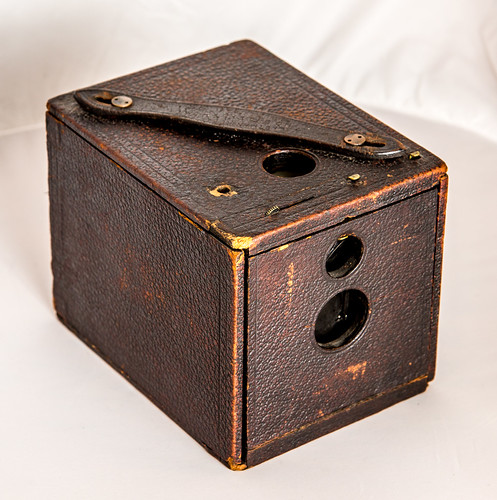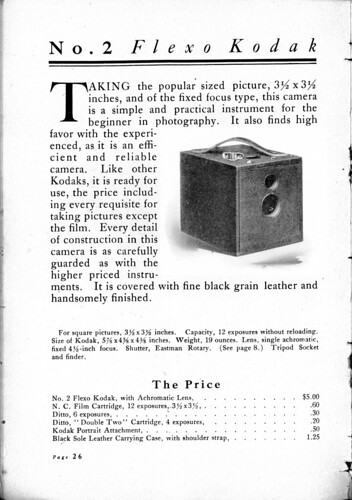Difference between revisions of "Kodak No. 2 Flexo"
Hanskerensky (talk | contribs) (Added Category:N) |
Hanskerensky (talk | contribs) (Added link to user manual page) |
||
| Line 19: | Line 19: | ||
==Links== | ==Links== | ||
| + | *[https://www.butkus.org/chinon/kodak/kodak_flexo_no-2/kodak_flexo_no-2.htm Kodak No. 2 Flexo user manual] at [https://www.butkus.org/chinon/ Butkus.org] | ||
*[http://www.pacificrimcamera.com/pp/kodakflexo.htm No. 2 Flexo] at [http://www.pacificrimcamera.com Pacific Rim Camera] | *[http://www.pacificrimcamera.com/pp/kodakflexo.htm No. 2 Flexo] at [http://www.pacificrimcamera.com Pacific Rim Camera] | ||
*[http://web.archive.org/web/20090527081542/http://www.boxcameras.com/no2flexo.html No. 2 Flexo] at [http://web.archive.org/web/20100329110226/http://www.boxcameras.com/ BoxCameras.com] via [http://www.archive.org Internet Archive: The Wayback Machine] | *[http://web.archive.org/web/20090527081542/http://www.boxcameras.com/no2flexo.html No. 2 Flexo] at [http://web.archive.org/web/20100329110226/http://www.boxcameras.com/ BoxCameras.com] via [http://www.archive.org Internet Archive: The Wayback Machine] | ||
Latest revision as of 05:59, 24 May 2022

|
| No.2 Flexo Kodak image by maoby (Image rights) |
The Kodak No. 2 Flexo is a box camera for rollfilm. It was easier to open than other box cameras since its removable sides and back were simply hinged together with the covering leather. The mechanical parts of shutter and aperture lever become accessible for adjustment or repair when the hinged front plate is put down. The camera was introduced in 1899 and sold for 5 US-Dollars. That was one year before Kodak introduced its one-dollar camera. The Flexo was produced from 1899 to 1913 and advertised as high class camera. In Europe it was also known as Plico. The camera used type No. 101 rollfilm. It was equipped with an achromatic lens and an Eastman Rotary Shutter. Looking at the mechanical parts shows how simple the box camera technology is: with a lever the rotation of the shutter could be suppressed. That was the B mode. Allowing rotation meant that the shutter closed itself after an instant. This simplicity of shutter mechanics was kept alive in hundreds of box camera types until ca. 1950.

|
| scanned by Mario Groleau (Image rights) |